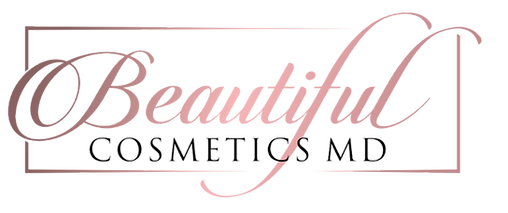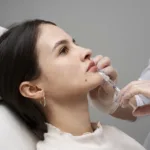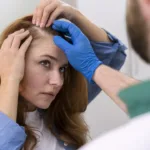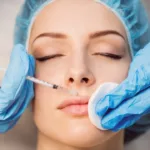What is the best aftercare for Botox: Are you considering Botox as a way to smooth out fine lines and restore a youthful appearance? Or have you recently had the procedure and are now navigating the post-treatment landscape? The key question on your mind might be, How long after Botox can you lie down? This article isn’t just about that pressing concern. We’re diving into a comprehensive guide on what to do—and what not to—after receiving Botox injections, ensuring that you protect your investment and enjoy the full benefits of this beloved cosmetic treatment.

The Importance of Timing: Why Patience Post-Botox is Critical
After a Botox session, it’s natural to want to settle into your usual routine, which could include lying down for a nap or turning in for the night. However, professionals in the field recommend that patients restrict this natural inclination for a period crucial for optimal results.
How long after Botox can you lay down to sleep? Typically, experts suggest a waiting period of four to six hours before lying flat. This precaution helps prevent the neurotoxin from migrating to areas where it wasn’t intended, preserving the precision of your treatment.
For those concerned about facial movements, How long should I move my face after Botox? Engaging your facial muscles through various expressions is encouraged immediately after the procedure and should be continued for around 20 minutes to help the solution settle into the targeted areas.
Unintended Journeys: The Risk of Neurotoxin Migration
When Botox migrates from the injection site, it’s not merely a matter of less visible results; it can potentially lead to side effects you’d most certainly wish to avoid. If you’re in a position that allows gravity to do its thing, like bending over, the toxin could affect nearby muscles, resulting in temporary but undesired outcomes such as eyelid drooping or asymmetry.
Can Botox migrate after 24 hours? While the risk decreases significantly, it’s still imperative to be cautious in the first 24 to 48 hours post-treatment. Any vigorous activity that increases blood flow to the face can potentially displace the neurotoxin.
Post-Botox Care: Protecting Your Results
Here are some tips to maximize the efficacy of your Botox treatment and ensure a smooth recovery:
Immediate Aftercare: First 4 Hours
- Keep upright: Resist lying down or leaning over.
- Facial exercises: Perform a series of expressions to engage the muscles treated.
- Avoid makeup: Prevent bacterial infection—a clean face is a safe face.
- Skip the gym: Refrain from heavy exercise for now; a raised heartbeat isn’t your friend in this situation.
Day Two and Beyond: Maintaining the Results
- Say no to alcohol: At least 48 hours before and after, keep away from drinks that could thin your blood.
- Handle with care: Be gentle around the injection sites; no rubbing or excessive pressure that could cause the Botox to spread.
- Cosmetic procedure pause: Wait for a day before resuming any other facial treatments.
- Sun caution: Protect your skin from sun exposure to prevent inflammatory responses.
Long-term Considerations
- Choose the right skincare: Dedicated products can extend the life of your results and keep your skin in tip-top shape.
What to Expect: Botox Results Timeline
As we’ve established, lying down immediately after Botox is off the cards. But what can you anticipate as you embark on the journey to a smoother visage?
- First 24-48 hours: Initial swelling and potential bruising.
- 2-10 days post-treatment: Noticeable reduction in wrinkles and fine lines.
- 3-4 weeks: Peak effect where full results are visible.
- 3-4 months down the line: Effects gradually wear off, considering a follow-up appointment.
Frequently Asked Questions
How long after getting Botox can I lie down to sleep?
It’s recommended to wait four to six hours before lying flat to prevent the neurotoxin from migrating to unintended areas and ensure the precision of your treatment.
Is it necessary to move my face immediately after Botox?
Yes, engaging facial muscles through various expressions immediately after the procedure is encouraged and should be continued for around 20 minutes to help the solution settle into the targeted areas.
Can Botox migrate after 24 hours?
While the risk decreases significantly, it’s still important to be cautious in the first 24 to 48 hours post-treatment. Vigorous activities that increase blood flow to the face can potentially displace the neurotoxin.
What are the immediate aftercare steps for maximizing Botox efficacy?
Keep upright for the first 4 hours, perform facial exercises, avoid makeup to prevent infection, skip heavy exercise, and refrain from lying down or leaning over.
How long should I avoid alcohol after getting Botox?
It’s advisable to stay away from alcohol for at least 48 hours before and after the Botox treatment to prevent blood thinning, which could affect the results.
When can I expect to see noticeable results after Botox?
Initial swelling and potential bruising may occur in the first 24-48 hours. Noticeable reduction in wrinkles and fine lines can be expected 2-10 days post-treatment, with the peak effect visible at 3-4 weeks. Effects gradually wear off around 3-4 months.
Optimizing Your Botox Experience: Advanced Aftercare Strategies
As with treatment, aftercare is important for Botox to work optimally in helping one achieve the desired youthful appearance. These guidelines on what to do and what not to do after a Botox session can significantly increase both how long the alertness lasts and how effective it is. Below are some high-level ways you can keep your post Botox procedure on point.
Minimizing Bruising and Swelling: Pro Tips for a Flawless Recovery
Bruising and swelling are common after any injectable procedure, but they can be minimized with a few expert tips:
- Ice, but with caution: Apply a cold compress to the treated areas intermittently for the first few hours post-injection. However, ensure that the pressure is light to prevent any disruption of the Botox placement.
- Arnica Montana: Consider using topical Arnica, a natural remedy known for reducing bruising and swelling. Available at most health stores, Arnica can be a useful addition to your aftercare kit.
- Elevation: Keep your head elevated, even when sleeping, for the first night. This posture can reduce swelling and accelerate recovery.
Advanced Skincare to Complement Botox
The synergy between Botox and a solid skincare routine cannot be overstated. Post-treatment skincare should focus on protection and nourishment:
- Hydration is key: Utilize a hyaluronic acid-based moisturizer to keep your skin plump and hydrated, complementing the smoothing effect of Botox.
- Retinol, with timing: Retinoids can support skin cell turnover and collagen production, enhancing the youthful appearance Botox offers. However, it’s vital to wait a few days post-procedure before resuming retinol use to avoid irritation.
- Vitamin C: Incorporate a vitamin C serum into your routine to protect against free radicals and assist in collagen synthesis, further boosting the anti-aging properties of your treatment.
Lifestyle Adjustments for Optimal Results
Post-Botox, certain lifestyle adjustments can further protect and enhance your results:
- Sleep strategy: Develop a back-sleeping habit if possible. This position can prevent putting pressure on treated areas, reducing the risk of inadvertently shifting the Botox.
- Mind what you eat: Foods high in salt can exacerbate swelling, while those rich in zinc may aid in the healing process.
- Stay cool: High heat environments such as saunas or hot baths should be avoided immediately after Botox, as heat can increase blood flow and swelling.
Things to Avoid to Preserve Botox Integrity
In addition to the common pointers, there are some lesser-known factors that might affect your Botox results:
- Facial treatments: Wait at least two weeks before undergoing any facial treatments that apply pressure, such as facial massages or microdermabrasion, to ensure that the Botox has settled properly.
- Travel considerations: High altitudes and cabin pressure during flight can influence Botox results; it might be wise to schedule your flights a few days after the treatment.
Conclusion: The Art and Science of Botox Aftercare
The science of Botox is enhanced through expert aftercare, which is an art. It is about improving your return on beauty by fusing patient knowledge, well-adapted skincare routines, and lifestyle changes that lead to optimum results. Accordingly, you are not only preserving the work done but also creating a setting for Botox that can go above and beyond your dreams if you are vigilant and active in following the guidelines of post-Botox care.
Every choice made after your procedure from staying upright to skincare savviness makes up the blend that defines your refreshed appearance. In this manner, when you embrace the comprehensive post-treatment principles laid down here, you open up yourself to enjoying the entire range of benefits offered by this transformative therapy.
Your journey with Botox does not end at the doctor’s office; it requires an ongoing commitment to maintaining a piece of art masterfully crafted on your skin canvas. By understanding these subtleties of care after receiving treatment, you can travel through this road gracefully and see to it that your investment in beauty thrives.





